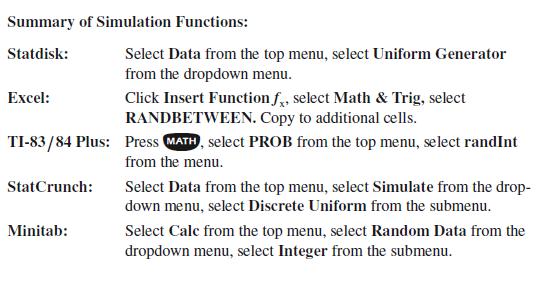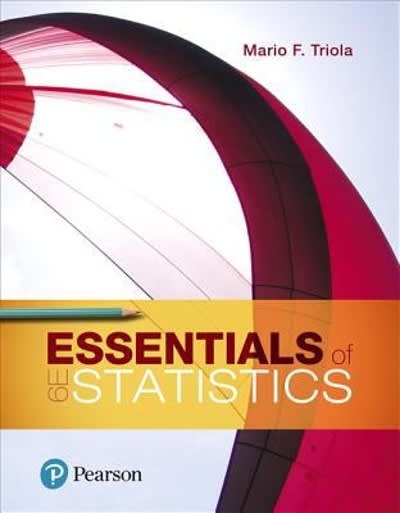Simulations Calculating probabilities are sometimes painfully difficult, but simulations provide us with a very practical alternative to
Question:
Simulations Calculating probabilities are sometimes painfully difficult, but simulations provide us with a very practical alternative to calculations based on formal rules. A simulation of a procedure is a process that behaves the same way as the procedure so that similar results are produced. Instead of calculating the probability of getting exactly 5 boys in 10 births, you could repeatedly toss 10 coins and count the number of times that exactly 5 heads (or simulated “boys”) occur. Better yet, you could do the simulation with a random number generator on a computer or calculator to randomly generate 1s (or simulated “boys”) and 0s (or simulated “girls”). Let’s consider this probability exercise:
Find the probability that among 50 randomly selected people, at least 3 have the same birthday.
For the above problem, a simulation begins by representing birthdays by integers from 1 through 365, where 1 represents a birthday of January 1, and 2 represents January 2, and so on. We can simulate 50 birthdays by using a calculator or computer to generate 50 random numbers (with repetition allowed) between 1 and 365. Those numbers can then be sorted, so it becomes easy to examine the list to determine whether any 3 of the simulated birth dates are the same. (After sorting, equal numbers are adjacent.) We can repeat the process as many times as we wish, until we are satisfied that we have a good estimate of the probability. Use technology to simulate 20 different groups of 50 birthdays. Use the results to estimate the probability that among 50 randomly selected people, at least 3 have the same birthday.

Step by Step Answer:






